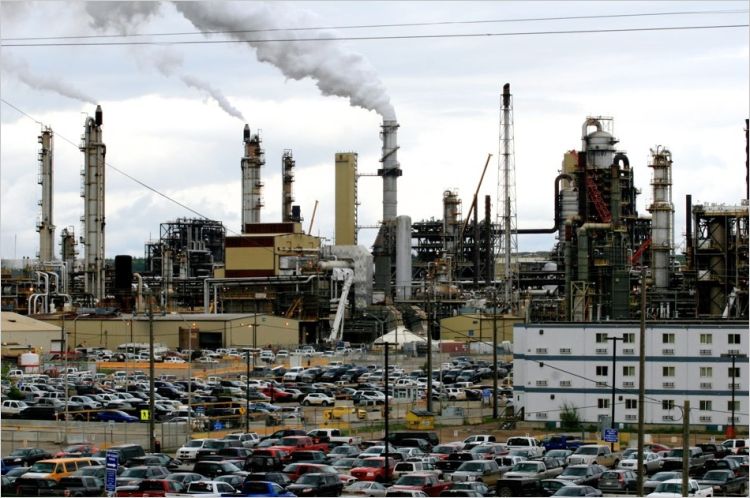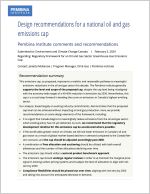Published in Calgary Herald (February 17, 2024)

Oilsands refinery in Fort McMurray. Photo: Pembina Institute
Canada’s energy companies are “awash in cash and hungry,” according to the Globe and Mail. That appetite is far from fully satiated, leading to numerous mergers in the energy sector both in this country and south of the border.
More consolidation is expected, as scale helps to deliver resilience and profit. Indeed, Canadian Natural Resources is in such good financial shape that this year it plans to pay out 100 per cent of free cash in the form of dividends to its shareholders.
What the industry isn’t doing is spending a significant amount on decarbonizing its operations. Only an emissions cap will obligate companies to do so. The federal government’s proposed cap represents a realistic and reasonable pathway to meaningful emissions reductions in the oil and gas sector this decade. It’s a vital part of Canada’s and Alberta’s journey to net zero by 2050.
Despite unanimous protest from the provincial government and various energy industry associations, the federal cap is realistic and reasonable.
How to do it
 Here’s how it can be achieved. Reducing methane emissions by 75 per cent by 2030 through the implementation of federal draft regulations could deliver more than half of the cap’s required reductions. Implementing carbon capture and storage would contribute another 12 metric tonnes (Mt) of reductions, and up to another 12 Mt could be achieved through process improvements, fuel substitution and energy efficiency.
Here’s how it can be achieved. Reducing methane emissions by 75 per cent by 2030 through the implementation of federal draft regulations could deliver more than half of the cap’s required reductions. Implementing carbon capture and storage would contribute another 12 metric tonnes (Mt) of reductions, and up to another 12 Mt could be achieved through process improvements, fuel substitution and energy efficiency.
Alberta’s own Emissions Reduction and Energy Development Plan committed to a 75 per cent reduction in methane by 2030, and to enhance funding for carbon capture and storage. But neither industry nor the Alberta government has committed to any clear timelines for action. That’s why we need this cap. Existing policy hasn’t spurred the level of investment in decarbonization that we need to see from the oil and gas sector.
There is a price associated with these measures, which the industry, with its ongoing profitability, is well positioned to pay. Moreover, over the long term, it is in Canada’s — and the industry’s — best interests to do so. It would be extremely risky for our governments to continue planning for a world in which high demand for fossil fuels — especially those with high emissions intensity — is maintained indefinitely.
The energy marketplace is changing
The energy transition is gaining momentum. The International Energy Agency forecasts that the growth in demand for oil will slow by 2028. Investments in clean energy have outpaced those in fossil fuels since 2018. In 2023, US$1.7 trillion was invested globally in clean energy versus US$1 trillion in fossil fuels. Sales of electric vehicles are soaring worldwide. In some areas, Alberta has also looked optimistically toward the future, having been Canada’s leader in deployment of wind and solar energy.
The global energy marketplace is changing, and Alberta needs to be prepared for a world in which not only is demand for oil and gas declining, but the emissions associated with those products are more highly scrutinized. The European Union is developing emissions intensity requirements for fossil fuel imports, aiming to be in place before the end of the decade. And industry is starting to anticipate these changes in the marketplace, with 50 of the world’s largest firms signing the Oil and Gas Decarbonization Charter at COP28 aiming to reach net zero by 2050, and near-zero methane emissions by 2030.
Alberta and oil and gas companies can either respond proactively to these trends by welcoming the emissions cap as an incentive to invest in decarbonization and electrification of the energy sector, or the province can continue to act as a brake on progress, running the risk of hosting potentially billions of dollars worth of stranded assets in the next decades.
The best strategy is taking climate action and implementing the emissions cap as soon as possible.
Janetta McKenzie is manager of the oil and gas team at the Pembina Institute.



